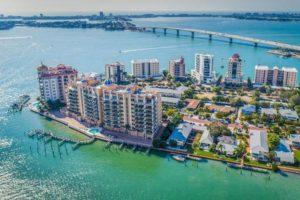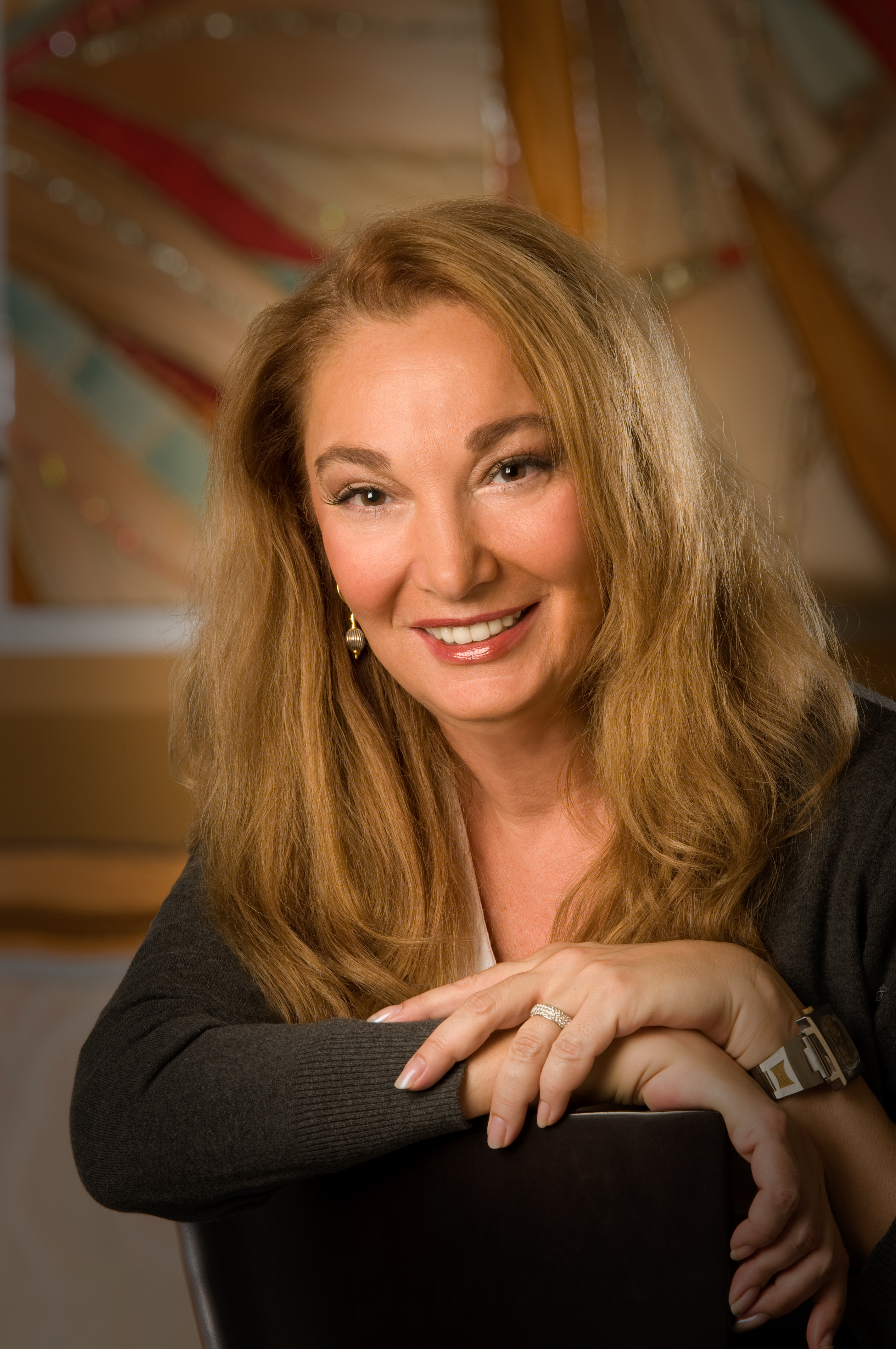
In luxury residential real estate, the first half of 2019 demonstrated the strength of the top-tier market. One of the things that Southwest Florida can usually bank on is people with deep pockets, usually stuffed with cash, buying multi-million-dollar homes.
The evidence:
• “It’s been a great year so far,” said Roger Pettingell, associated with Coldwell Banker Residential Real Estate and a waterfront real estate specialist based on Longboat Key. “With over $60 million in pending sales, we are on track to break the $100 million mark. … We are ahead of last year at this time. June has been particularly good for the upper end. We have been working with multiple buyers and have received three offers over $3 million in June. We put one of our $4 million-plus listings under contract in June.” Pettingell and his team reached a record $106 million last year, his first in triple million digits.
• “The luxury market has led the charge for our business,” said Joel Schemmel, associated with Premier Sotheby’s International Realty and based in downtown Sarasota. “Our sales overall have been great in the last six months. We closed $57 million in all of 2018. So far in 2019, we have closed over $45 million and have another $5 plus million pending. The showing activity in the last several months has also been solid in the luxury and ultra-luxury market. Therefore, I expect the sales to continue.”
• “Ultra luxury is selling. I track this market,” said Georgina Clamage, the manager of Michael Saunders & Co.’s Longboat Key office. “Our area is becoming more attractive to the affluent.”
Past headlines indicate the enduring allure of luxury living: In 2006, unlike the rest of the area’s real estate market, $10 million-plus listings remain a bright spot. Seven years later, in 2013, a $10 million home sales on Siesta Key were part of a luxury resurgence as the region continued to exit the effects of the Great Recession.
Quantifying luxury
A basement price point of $5 million defines the ultra-luxury market. Mere luxury starts at $3 million, though some quarters drop that figure to a pedestrian $1 million. During the first six months of this year, 41 homes sold above the $3 million threshold. Last year, that number was 56. While the number of luxury sales is down year over year, average prices are 5% higher and time on the market shorter, Clamage said.
In the Sarasota-Manatee-Charlotte region, ultra-luxury homes on the islands are an especially hot commodity.
Siesta and Casey keys are particularly popular, Clamage said, with seven sales on Siesta and five on Casey, both figures up from 2018′s first two quarters. Longboat Key, with a whole lot more pricey properties, claimed nine sales, down two from 2018.
Many buyers are coming from high-tax states — including California and New York — that got worse after federal tax laws clamped down on deductions for state and local taxes, including property tax writeoffs. “The tax impact is definitely helping us,” Clamage said.
June’s top sale
Deborah Beacham, a Realtor with Michael Saunders & Co., scored a double victory in the $6.725 million transaction for the island residence at 2016 Casey Key Road on Blackburn Bay. She was both the listing and selling agent for the 7,508-square-foot home.
That monetary figure easily surpassed the second-place sale, $4.6 million for 7224 Point of Rocks Road on Siesta Key’s Gulf side. Judie Berger of Premier Sotheby’s listed the home, and Lisa Warren of Own SRQ LLC brought the buyer.
Beacham is having a good year, placing fourth, too, with the sale of her $3.35 million listing also on Casey Key Road.
All told, June saw 13 homes sell for $2 million or higher, with four of those surpassing $3 million. Single-family homes almost pitched a shutout, but one condo got on the list.
Cash paid off eight of those transactions. “That’s typical in that price range,” Clamage said.
2019′s winner (so far)
Debra Pitell-Hauge and Barbara May, come on down. The listing and buyer’s agents respectively, both with Michael Saunders, didn’t have to haggle over the price in their January transaction. The buyer paid full fare, $9.85 million for the residence at 1233 Hillview Drive, on Sarasota Bay, in the Harbor Acres neighborhood.
That represents the highest sale in Sarasota County since 2014.
Second place, in a tie, went to Pettingell as listing agent for a Longboat Key beachfront estate in Regent Court. The $7.5 million sale in April came with a distinction — as the highest Longboat Key sale recorded through the Multiple Listing Service in eight years.
Ian Addy and Gail Wittig of Michael Saunders brought the buyer for the sale of the off-market beachfront estate, portending a possible trend in transactions where a property does not enter the open market.
Schemmel also recorded a $7.5 million sale — for the residence at 8218 Sanderling Road on Siesta Key. That transaction, though, came with its own distinction — extra dollar signs since Schemmel earned both buyer and seller commissions.
As far as real estate companies, Saunders stands head and shoulders above the competition in representing either buyers or sellers. So far this year, the regional brokerage handled 40% of the market. Of the 82 sides in the 41 transactions (either buyer or seller), Saunders brought 33 home.
Four of those sales took home 100% of the asking price. The majority of buyers pitched counter offers that landed in the 80s and 90s. One of the two outliers only fetched 58%, plunging from $10.9 million to $6.235 million. A property is only worth what someone will pay for it.
Billionaire buyers
This puts luxury real estate in a perspective of extravagance gone wild.
The most expensive sale of an American home occurred in January for an unfinished 79th-floor penthouse on Billionaires’ Row in Manhattan. Imagine paying $238 million for a residence you’re unlikely to use as anything more than a palatial hotel room instead of a primary residence.
American hedge fund multi-billionaire Kenneth C. Griffin — founder and CEO of the Chicago-based global investment firm Citadel and one of the richest men in the world — padded his pad holdings with this purchase. Griffin already owns a $60 million penthouse in Miami, and a $122 million mansion in London, among other trophy homes. That Miami deal set a record for a Miami-Dade residential sale. His January 2019 purchase of the top four floors of a Gold Coast condo tower for $58.5 million eclipsed the previous high mark in Chicago. And the London acquisition broke the city’s old record.
During recent years, Griffin has spent more than $750 million on homes in Chicago, New York, Miami, Palm Beach and London. He owns $230 million in Palm Beach property alone, various media outlets have reported. The New York Times described the 50-year-old’s latest acquisition as setting a “new standard for conspicuous consumption.”
That $238 million would pay the price for almost every single affordable house on the market in North Port, equaling the 1,133 homes in that Florida city priced at or below $216,388. Redfin’s analysis calls homes priced at that mark affordable, employing various data points.
While the luxury market is robust in the city, the Wall Street Journal described New York City’s top-tier condo market as “reeling,” with few indications of a rebound this year. Prices for condos $5 million and up plunged 28 percent in 2018.
Overall, though, New York City reigns as home to the most billionaires in the world — 85 — and that point is driving the city’s luxury housing prices higher, according to a report from the research arm of Savills, a global real estate services provider. Billionaires have helped propel ultra-prime property prices up 15% over the past five years.
Fun fact: In the global billionaire population, New York is followed by Hong Kong (79), Moscow (71), Beijing (61) and London (55).
Sales across Southern California are slumping, too, accompanied by price cuts. “After seven years of jaw-dropping growth, L.A.’s real estate market — including its luxury sector — has officially slowed,” the Hollywood Reporter stated in March.
Developer Bruce Makowsky built what looks like a five-star resort atop a Bel Air hill, but it’s a spec home that he dubbed Billionaire. It was listed in January 2017 as the most expensive in the country, with the asking price setting a record at $250 million. Today, the empty residence — which the Los Angeles Times described as “an extravagant mega-mansion doubling as a monument to opulence” — now lists for $150 million.
Who doesn’t need 21 bathrooms, five bars, three kitchens, a 40-seat movie theater and a four-lane Louis Vuitton bowling alley? And an auto gallery jammed with a $30-million fleet of glamorous cars and motorcycles — including a custom Rolls-Royce. Should it sell for $150 million, it would become the most expensive home ever sold in Los Angeles County.
The current record holder, a chateau in Holmby Hills built by film and television producer Aaron Spelling, sold for $120 million in an all-cash deal, according to reports. The transaction closed last month. Another fun fact: The interior covers about an acre. That eclipsed the previous record. An oceanfront property in Malibu’s Carbon Beach sold last year for $110 million.
Closer to home
The emperor of home sales in the Sarasota-Manatee-Charlotte region? Nowhere near those deals. The home at 1067 Westway Drive in the Lido Shores neighborhood on the northwest side of Lido Key went for $13 million in a March 2006 all-cash transaction.
That comes from MLS records dating back to 1900.
Of the top 24 listings, all sold for $7.5 million and above, and cash completed 15 transactions. Nothing earlier than November 2004 made the sold list, though a home built in 1938 did.
It’s only up from here
“Today, $1 million won’t get you a luxury home in most major markets,” Javier Vivas, director of economic research for Realtor.com, stated in one of the Luxury Home Index reports from last year.
In another report last Tuesday, UCLA real estate professor Paul Habibi told the Los Angeles Times that the $120 million sale is a good sign for developers seeking massive sums for their estates because of the precedent it sets. “If $120 million is the new benchmark, that makes it more plausible to sell a home for $75 million or $100 million,” he said. Must be just California, or wherever billionaires want to hang out.
Up and up we go. That kind of astronomical money puts the luxury market here in a somewhat sensible perspective and less outlandish.
Herald-Tribune July 9, 2019
 Sarasota
Sarasota